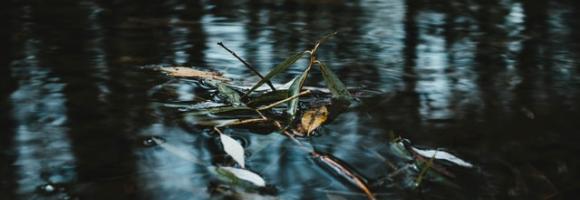
How well are we protecting freshwater ecosystems and how strong are anthropogenic changes affecting surface water in a given area? Human pressures are constantly increasing and it is important to monitor the consequences of the associated changes on the environment, in particular inside and around protected areas, to ensure that natural ecosystems and their associated species and ecosystem functions (e.g. goods and services) are preserved. By comparing surface water maps overtime at the country and protected area level, changes in water regimes can be identified.
Indicator unit: Areas of inland permanent and seasonal surface water and their changes over time (1984 - 2018) are expressed in km2 and percentages. The following statistics are computed for each protected area, each country and each terrestrial ecoregion and are provided, together with associated maps, for each terrestrial and coastal protected area of size ≥ 1 km2 and each country :
- Net change (km2 ) of permanent surface water (1984 - 2020)
- Net change (km2 ) of seasonal inland water (1984 - 2020)
- Net change (km2 ) of protected permanent surface water (1984 - 2020)
- Net change (km2 ) of protected seasonal inland water (1984 - 2020)
We further provide maps of water occurrence, water occurrence change intensity and water transitions. Area of interest Surfaces of inland surface water and change statistics have been computed at the country level, terrestrial ecoregion level and for all protected areas.
Area of interest: Surfaces of inland surface water and change statistics have been computed at the country level and for all protected areas.
---
Data Uploaded by Luca Battistella using the Digital Observatory for Protected Areas Services (2022)
Inland surface water
Many surface waters and wetlands are unique and species-rich ecosystems upon which numerous plant and animal species depend, and can provide key ecosystem services such as nutrient cycling, primary production, water provisioning, water purification and recreation (Dudgeon et al. 2006; Dodds et al. 2013). Surface waters may be more at risk than other land habitat resources due to multiple pressures such as unsustainable consumption, wetland drainage, land use intensification, stream diversion and climate change, a situation that is particularly worrying in dry areas where water scarcity is already becoming a major limiting factor for wildlife and for humans (Vörösmarty et al. 2010; Carpenter et al., 2011; Dodds et al. 2013). For these reasons, the risk of extinction for freshwater species was already found to be higher than for their terrestrial counterparts (Collen et al., 2013). Here, we quantify surface water in protected areas and countries using the 2020 version of the Global Surface Water product mapped by Pekel et al. (2016). By further assessing temporal changes using the full 34-year history of Landsat data one can distinguish between permanent and seasonal water, and assess the net change of water inside areas that are currently protected.
Inland surface water
Many surface waters and wetlands are unique and species-rich ecosystems upon which numerous plant and animal species depend, and can provide key ecosystem services such as nutrient cycling, primary production, water provisioning, water purification and recreation (Dudgeon et al. 2006; Dodds et al. 2013). Surface waters may be more at risk than other land habitat resources due to multiple pressures such as unsustainable consumption, wetland drainage, land use intensification, stream diversion and climate change, a situation that is particularly worrying in dry areas where water scarcity is already becoming a major limiting factor for wildlife and for humans (Vörösmarty et al. 2010; Carpenter et al., 2011; Dodds et al. 2013). For these reasons, the risk of extinction for freshwater species was already found to be higher than for their terrestrial counterparts (Collen et al., 2013). Here, we quantify surface water in protected areas and countries using the 2020 version of the Global Surface Water product mapped by Pekel et al. (2016). By further assessing temporal changes using the full 34-year history of Landsat data one can distinguish between permanent and seasonal water, and assess the net change of water inside areas that are currently protected.